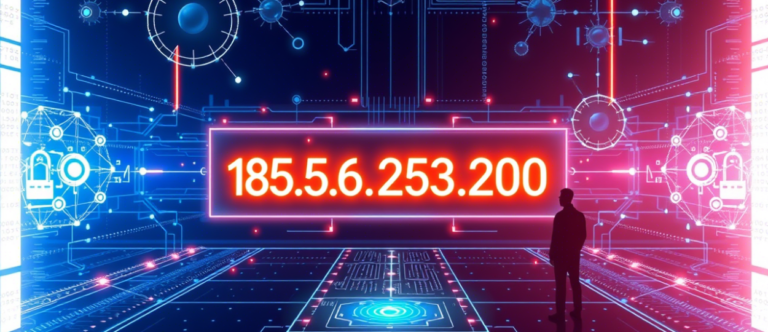FintechAsia Error Codes: What They Are and How to Solve Them

If you’ve ever encountered FintechAsia error codes, you know how frustrating it can be when your financial transactions or digital payments don’t go through as expected. Whether you’re a consumer or a business relying on financial technology, error codes can cause significant disruptions. In this article, we’ll explore what FintechAsia error codes are, the common reasons behind them, and most importantly, how to troubleshoot and solve these issues to keep your transactions smooth.
Our goal is to provide clear, actionable insights to help you understand these errors and get back to your financial activities without delays.
Understanding FintechAsia Error Codes
What Are FintechAsia Error Codes?
FintechAsia error codes are messages displayed when there’s a problem within the financial technology platform, usually in Asian markets. These errors typically appear during online transactions, digital payments, or other financial services powered by fintech systems. They can be caused by issues related to network connectivity, authentication failures, software bugs, or even server overload.
From personal experience, I’ve encountered a couple of these error codes myself, and trust me, it can be frustrating when you’re trying to make payments or complete transactions. However, understanding the cause behind these codes can make all the difference. So, let’s dive deeper into why these errors happen and how we can resolve them.
Common Causes of FintechAsia Error Codes
Several factors contribute to FintechAsia error codes, and knowing these can help you prevent them. Here are some of the most common reasons:
1. Network Connectivity Issues
The internet is a vital component for fintech platforms, and unstable or slow connections can cause timeouts and other errors. If you’ve ever faced errors while trying to complete a payment, you might have experienced network instability. A quick solution is to ensure you have a stable and fast internet connection. If possible, try using a wired connection instead of Wi-Fi to avoid disruptions.
2. Authentication Failures
Another frequent cause of FintechAsia error codes is authentication problems. Whether it’s entering the wrong password or facing issues with two-factor authentication, any authentication failure can result in errors. In my experience, setting up stronger authentication methods like biometrics or using secure passwords can help reduce these errors significantly.
3. Software Compatibility Problems
Sometimes, errors arise when your software or browser is outdated. This can cause incompatibilities between your system and the fintech platform, leading to error messages. Keeping your software and browser updated regularly can prevent these issues from cropping up.
4. Server Overload
When a fintech platform experiences a surge in users, the servers may become overloaded, causing slowdowns or errors. If you are using a platform during peak hours, this might be the reason behind the error code you’re seeing. Unfortunately, server-related issues often require the fintech company to address them, so patience is key.
How to Troubleshoot FintechAsia Error Codes

Now that we understand the potential causes, let’s talk about how we can fix these issues when they happen.
1. Check Your Internet Connection
If you’re facing frequent error codes, it’s a good idea to start by checking your internet connection. Make sure you have a stable connection, and try resetting your router or switching to a different network. In some cases, a weak connection could be the root cause.
2. Update Your Software
If your browser or app is outdated, update it. Regular updates ensure that you’re using the latest features and security patches. Most fintech platforms have their own apps that can be updated via Google Play or the App Store. This simple step can often fix many error-related issues.
3. Recheck Your Login Credentials
If you’re encountering an authentication error, double-check your credentials. Ensure your username, password, and any two-factor authentication codes are correct. If the problem persists, reset your password or reach out to customer support for assistance.
4. Contact Customer Support
If the error is related to server overload or an issue on the platform’s end, your best bet is to contact customer support. They can provide more detailed insights and let you know if there’s an ongoing issue affecting the platform.
The Impact of FintechAsia Error Codes on Users
Error codes aren’t just annoying; they can have real consequences. From delayed payments to disrupted business operations, FintechAsia error codes can negatively impact users in various ways. Here’s a look at the possible impacts:
1. Service Interruptions
For businesses and consumers relying on fintech platforms for payments or transactions, encountering an error can lead to delays. This could affect customers’ experience, making them less likely to return to the platform if the issues are frequent.
2. Security Concerns
In some cases, error codes can be a sign of underlying security issues, such as unauthorized access or potential breaches. It’s essential to monitor your accounts regularly and ensure your passwords and security methods are up to date.
3. Operational Challenges for Financial Institutions
For fintech companies, error codes can result in significant operational challenges. Service downtimes can affect customer satisfaction, and frequent errors may lead to a loss of trust. A well-maintained infrastructure can help reduce such issues.
Best Practices to Prevent FintechAsia Error Codes
1. Implement Robust Security Measures
If you’re managing a fintech platform, consider implementing robust security measures like two-factor authentication and encryption to prevent issues related to unauthorized access. This will not only protect your users but also reduce errors related to login failures.
2. Invest in Scalable Infrastructure
Ensuring that your infrastructure is scalable is crucial. With more users relying on digital financial services, the last thing you want is server overload. Investing in cloud-based solutions can provide scalability and help reduce the chances of server overload errors.
3. Monitor System Health Regularly
Regular system checks can help identify potential issues before they affect users. Monitoring server performance, app crashes, and other operational aspects of the platform can allow you to address problems quickly.
Conclusion

Encountering FintechAsia error codes doesn’t have to be a nightmare. With the right knowledge, troubleshooting steps, and preventive measures, these errors can be managed effectively. Whether you’re a consumer trying to make a payment or a business managing your financial technology systems, understanding the causes and solutions to these error codes is key to smooth operations.
If you’re still experiencing issues, don’t hesitate to reach out to customer support, and make sure to keep your software and internet connection up to date. Remember, in the world of fintech, staying informed and prepared is half the battle.
FAQs
1. What should I do if I keep seeing FintechAsia error codes?
Check your internet connection, update your software, and ensure your login credentials are correct. If the issue persists, contact customer support.
2. Can FintechAsia error codes be caused by server overload?
Yes, high user traffic can overwhelm servers, causing errors. This is often resolved by the platform’s technical team.
3. How can I prevent FintechAsia error codes in the future?
Ensure a stable internet connection, keep your software updated, and implement strong security measures like two-factor authentication.
4. Are FintechAsia error codes a sign of security issues?
Sometimes, error codes may indicate security problems, such as unauthorized access attempts. It’s essential to monitor your accounts regularly.
5. Can server issues cause multiple error codes at once?
Yes, during high traffic or technical issues, a server overload can cause multiple error codes across the platform.






